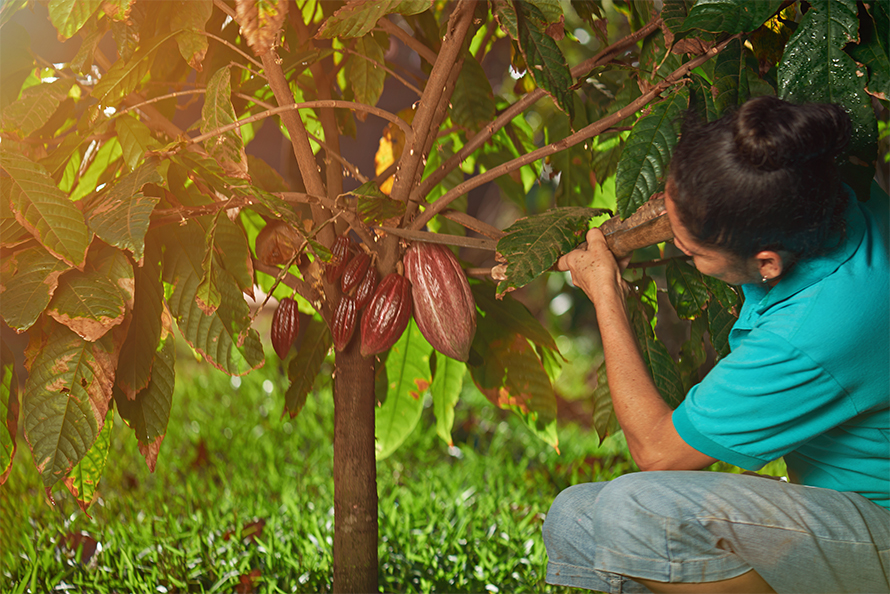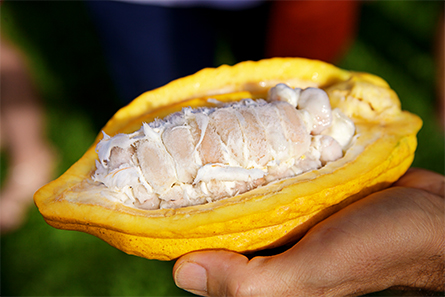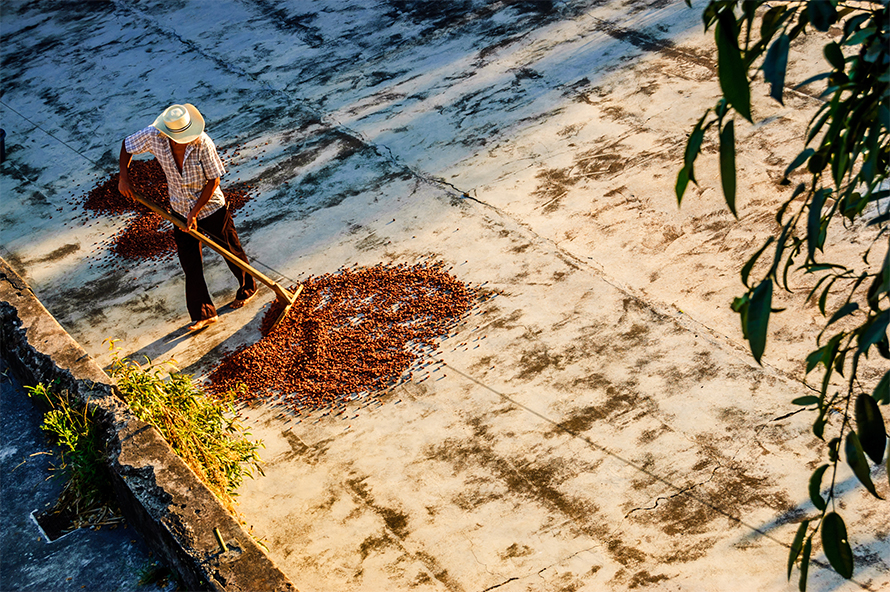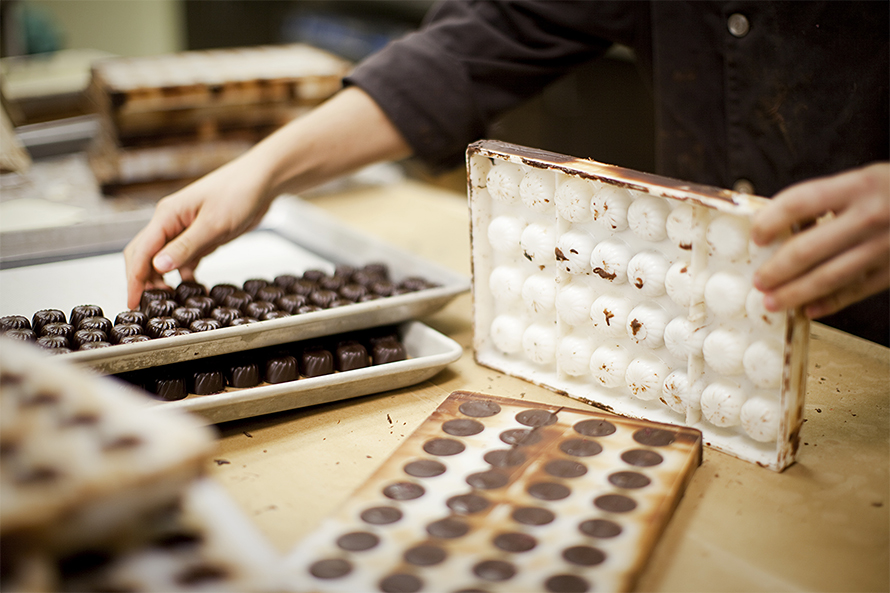Chocolate’s secret ingredient
Whether baked as chips into a cookie, melted into a sweet warm drink or molded into the shape of a smiling bunny, chocolate is one of the world's most universally consumed foods.

Even the biggest chocolate lovers, though, might not recognize what this ancient food has in common with kimchi and kombucha: its flavors are due to fermentation. That familiar chocolate taste is thanks to tiny microorganisms that help transform chocolate's raw ingredients into the much-beloved rich, complex final product.
In labs from Peru to Belgium to Ivory Coast, self-proclaimed chocolate scientists like me are working to understand just how fermentation changes chocolate's flavor. Sometimes we create artificial fermentations in the lab. Other times we take cacao bean samples from real fermentations "in the wild." Often, we make our experimental batches into chocolate and ask a few lucky volunteers to taste it and tell us what flavors they detect.
After decades of running tests like this, researchers have solved many of the mysteries that govern cacao fermentation, including which microorganisms participate and how this step governs chocolate flavor and quality.

From seed pod to chocolate bar
The food you know as chocolate starts its life as the seeds of football-shaped pods of fruit growing directly from the trunk of the Theobroma cacao tree. It looks like something Dr. Seuss would have designed. But as long as 3,900 years ago the Olmecs of Central America had figured out a multi-step process to transform these giant seed pods into an edible treat.

First, workers crack the brightly colored fruit open and scoop out the seeds and pulp. The seeds, now called "beans," cure and drain over the course of three to 10 days before drying under the Sun. The dry beans are roasted, then crushed with sugar and sometimes dried milk until the mixture feels so smooth you can't distinguish the particles on your tongue. At this point, the chocolate is ready to be fashioned into bars, chips or confections.
It's during the curing stage that fermentation naturally occurs. Chocolate's complex flavor consists of hundreds of individual compounds, many of which are generated during fermentation. Fermentation is the process of improving the qualities of a food through the controlled activity of microbes, and it allows the bitter, otherwise tasteless cacao seeds to develop the rich flavors associated with chocolate.
Microorganisms at work
Cacao fermentation is a multi-step process. Any compound microorganisms produced along the way that changes the taste of the beans will also change the taste of the final chocolate.
The first fermentation step may be familiar to home brewers, because it involves yeasts – some of them the same yeasts that ferment beer and wine. Just like the yeast in your favorite brew, yeast in a cacao fermentation produces alcohol by digesting the sugary pulp that clings to the beans.
This process generates fruity-tasting molecules called esters and floral-tasting fusel alcohols. These compounds soak into the beans and are later present in the finished chocolate.
As the pulp breaks down, oxygen enters the fermenting mass and the yeast population declines as oxygen-loving bacteria take over. These bacteria are known as acetic acid bacteria because they convert the alcohol generated by the yeast into acetic acid.
The acid soaks into the beans, causing biochemical changes. The sprouting plant dies. Fats agglomerate. Some enzymes break proteins down into smaller peptides, which become very "chocolatey"-smelling during the subsequent roasting stage. Other enzymes break apart the antioxidant polyphenol molecules, for which chocolate has gained renown as a superfood. As a result, contrary to its reputation, most chocolate contains very few polyphenols, or even none at all.

All the reactions kicked off by acetic acid bacteria have a major impact on flavor. These acids encourage the degradation of heavily astringent, deep purple polyphenol molecules into milder-tasting, brown-colored chemicals called o-quinones. Here is where cacao beans turn from bitter-tasting to rich and nutty. This flavor transformation is accompanied by a color shift from reddish-purple to brown, and it is the reason the chocolate you're familiar with is brown and not purple.
Finally, as acid slowly evaporates and sugars are used up, other species – including filamentous fungi and spore-forming Bacillus bacteria – take over.
As vital as microbes are to the chocolate-making process, sometimes organisms can ruin a fermentation. An overgrowth of the spore-forming Bacillus bacteria is associated with compounds that lead to rancid, cheesy flavors.
Terroir of a place and its microbes
Cacao is a wild fermentation – farmers rely on natural microbes in the environment to create unique, local flavors. This phenomenon is known as "terroir": the characteristic flair imparted by a place. In the same way that grapes take on regional terroir, these wild microbes, combined with each farmer's particular process, confer terroir on beans fermented in each location.

Market demand for these fine, high-quality beans is growing. Makers of gourmet, small-batch chocolate hand-select beans based on their distinctive terroir in order to produce chocolate with an impressive range of flavor nuances.
If you've experienced chocolate only in the form of a bar you might grab near the grocery store checkout, you probably have little idea of the range and complexity that truly excellent chocolate can exhibit.
[Over 100,000 readers rely on The Conversation's newsletter to understand the world. Sign up today.]
A bar from Akesson's Madagascar estate may be reminiscent of raspberries and apricots, while Canadian chocolate-maker Qantu's wild-fermented Peruvian bars taste like they've been soaked in Sauvignon Blanc. Yet in both cases, the bars contain nothing except cacao beans and some sugar.
This is the power of fermentation: to change, convert, transform. It takes the usual and make it unusual – thanks to the magic of microbes.![]()
Caitlin Clark, Ph.D. Candidate in Food Science, Colorado State University
This article is republished from The Conversation under a Creative Commons license. Read the original article.
Enjoy reading ASBMB Today?
Become a member to receive the print edition four times a year and the digital edition monthly.
Learn moreGet the latest from ASBMB Today
Enter your email address, and we’ll send you a weekly email with recent articles, interviews and more.
Latest in Science
Science highlights or most popular articles

Fueling healthier aging, connecting metabolism stress and time
Biochemist Melanie McReynolds investigates how metabolism and stress shape the aging process. Her research on NAD+, a molecule central to cellular energy, reveals how maintaining its balance could promote healthier, longer lives.

Mapping proteins, one side chain at a time
Roland Dunbrack Jr. will receive the ASBMB DeLano Award for Computational Biosciences at the ASBMB Annual Meeting, March 7–10, just outside of Washington, D.C.

Exploring the link between lipids and longevity
Meng Wang will present her work on metabolism and aging at the ASBMB Annual Meeting, March 7-10, just outside of Washington, D.C.

Defining a ‘crucial gatekeeper’ of lipid metabolism
George Carman receives the Herbert Tabor Research Award at the ASBMB Annual Meeting, March 7–10, just outside of Washington, D.C.

The science of staying strong
Muscles power every movement, but they also tell the story of aging itself. Scientists are uncovering how strength fades, why some species resist it and what lifestyle and molecular clues could help preserve muscle health for life.

Bacteriophage protein could make queso fresco safer
Researchers characterized the structure and function of PlyP100, a bacteriophage protein that shows promise as a food-safe antimicrobial for preventing Listeria monocytogenes growth in fresh cheeses.

